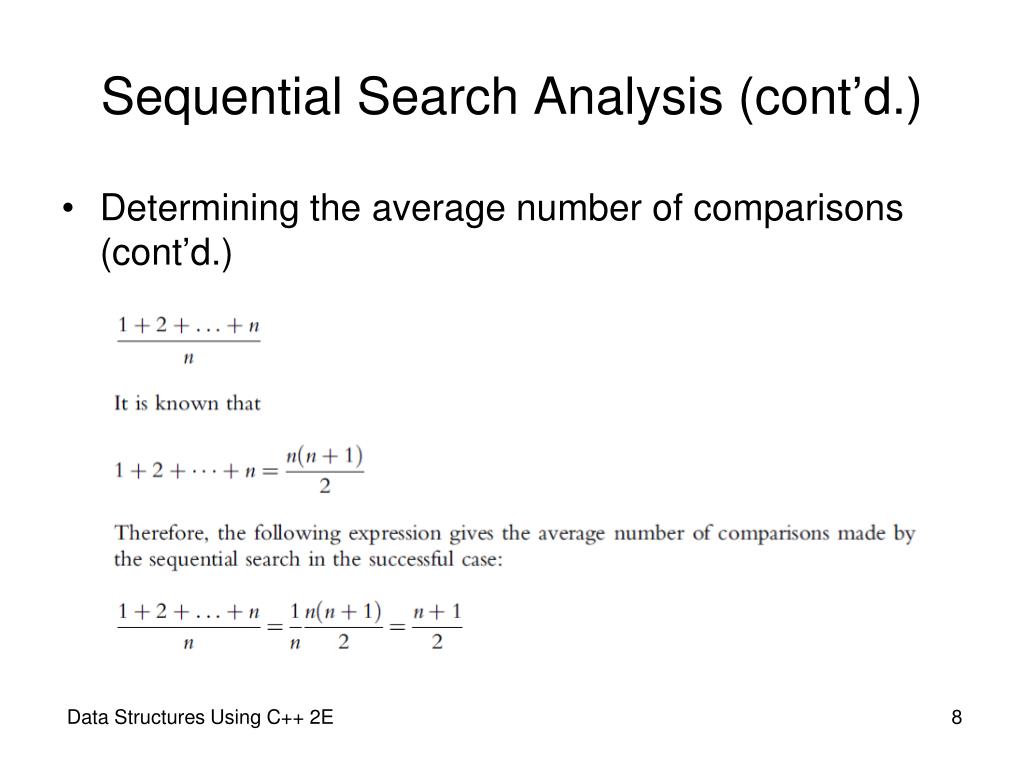

This would eventually settle the list into to its ideal form, assuming the elements were searched with certain probabilities. Thereby reducing the amount of comparisons needed on average.Ī way to implement this in practice might be to move recently searched items 1 place forward in the list (assuming the order of the list is not critical). If we know what frequency with which certain targets are searched for, we can rearrange the list such that things with a higher probability of being searched for are near the beginning. Int search ( List list, T target ) ^nip_i\] Given a list $L$ of length $n$ with the $i$th element denoted $L_i$, and a target value denoted $T$: As such, we might as well implement this version instead. This slight modification makes our output more useful, despite having no effect on the number of steps the algorithm takes. In the case of an unsuccessful search, a special number denoting a failure would be returned instead, usually -1. If the end of the list is reached and no match was found, it is an unsuccessful search and the algorithm returns false.Ī useful modification of this algorithm is to return the index of the target in the list when a match is found rather than just true. If they match then it is a successful search and the algorithm returns true. Given a target value, the algorithm iterates through every entry on the list and compares it to the target.

It is one of the most intuitive (some might even say naïve) approaches to search: simply look at all entries in order until the element is found. Program: Write a program to implement linear search in C language.Sequential search, or linear search, is a search algorithm implemented on lists. Now, let's see the programs of linear search in different programming languages.

If there is no match or the search element is not present in the given array, return -1.If the element does not match, then move to the next element.If the element matches, then return the index of the corresponding array element.In each iteration of for loop, compare the search element with the current array element, and. First, we have to traverse the array elements using a for loop.The steps used in the implementation of Linear Search are listed as follows. It is widely used to search an element from the unordered list, i.e., the list in which items are not sorted. If the match is found, then the location of the item is returned otherwise, the algorithm returns NULL. In Linear search, we simply traverse the list completely and match each element of the list with the item whose location is to be found. Linear search is also called as sequential search algorithm. So, here we will discuss the popular searching technique, i.e., Linear Search Algorithm. Two popular search methods are Linear Search and Binary Search. If the element is present in the list, then the process is called successful, and the process returns the location of that element otherwise, the search is called unsuccessful. Searching is the process of finding some particular element in the list. In this article, we will discuss the Linear Search Algorithm.


 0 kommentar(er)
0 kommentar(er)
